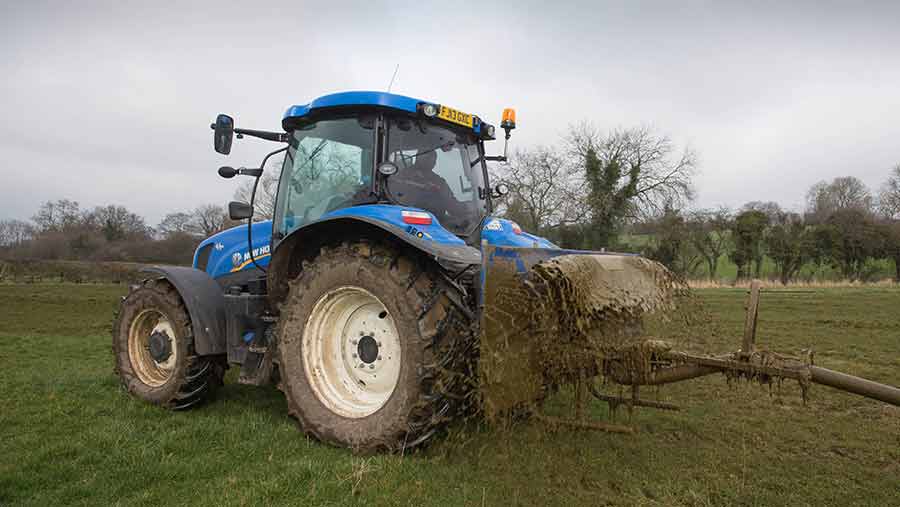Business Clinic: Manure management plan advice
 © Tim Scrivener
© Tim Scrivener Whether you have a legal, tax, insurance, management or land issue, Farmers Weekly’s Business Clinic experts can help. Here, Savills’ Stephen Lockwood advises on manure management plans.
Q As an arable farmer with my own land, I am now looking to create a mixed holding incorporating beef and sheep enterprises to improve soil health.
As part of the justification for the livestock buildings I have been asked to provide a manure management plan. What do I need to do?
A You will be relieved to know that developing a manure management plan is not overly onerous.
It is also an essential part of ensuring you are nitrate vulnerable zone (NVZ) compliant. As a livestock producer it will also form part of the protocol for meeting your Red Tractor Assurance standards.
See also: Business Clinic: Grazing licences – tips on what to include

Stephen Lockwood, Associate, Savills Food & Farming
The plan must assess the pollution risk to ground and surface waters from spreading manures, litters, slurries and other organic wastes on your land. It helps minimise the pollution risk by identifying when and where to spread these materials.
The first stage of the plan is to calculate the minimum area required for spreading based on your livestock numbers and the winter housing period.
Standard data tables are available from a number of sources including www.gov.uk. For example, a suckler cow would require 0.019ha of land for each month it is housed.
Having calculated the area required the second stage is to identify the manure spreading limitations of your land.
You will need to account for the areas likely to flood, the degree of any field slope, the presence of effective land drains and any environmentally sensitive areas or agri-environment scheme restrictions.
The soil type is also an important factor especially where you have slowly permeable or shallow soils (less than 30cm).
On a farm map, identify all the water features and sources. Each field will need to be assessed and risk categorised into low (green), high (yellow) or very high risk (orange). Certain fields will be unsuitable for spreading under certain conditions and at certain times of the year.
No spreading zones (red) should be marked for example within 50m of a spring, well or borehole or 10m of any surface waters.
Low-risk areas are likely to be suitable for applications year round, but do keep in mind if you are within an NVZ area, there are closed non-spreading periods for slurries, litters and manures that have a high readily available nitrogen content.
If possible design the housing system to avoid the creation of slurry.
If there is insufficient land available to spread your manure you must ensure there is enough suitable storage capacity to hold any manure that cannot be spread.
Storage of solid manures in temporary field heaps is permitted for a 12-month period before they must be relocated.
The heaps can only be on low-risk areas with their locations marked on the risk map. Alternatively, you could reduce your stocking levels or make arrangements to export surplus manure to a neighbour.
Keep detailed records of your calculations and applications for a minimum of five years. It is important to review and update your plan regularly to account for any changes in circumstances.
An effective plan will use the manure to the maximum benefit of the soils, save fertiliser costs and protect the environment.
Further guidance can be found in Defra’s code of good agricultural practice for protecting water, soil and air.
Do you have a question for the panel?
 Outline your legal, tax, finance, insurance or farm management question in no more than 350 words and Farmers Weekly will put it to a member of the panel. Please give as much information as possible.
Outline your legal, tax, finance, insurance or farm management question in no more than 350 words and Farmers Weekly will put it to a member of the panel. Please give as much information as possible.
Send your enquiry to Business Clinic, Farmers Weekly, RBI, Quadrant House, The Quadrant, Sutton, Surrey SM2 5AS.
You can also email your question to fwbusinessclinic@rbi.co.uk.
